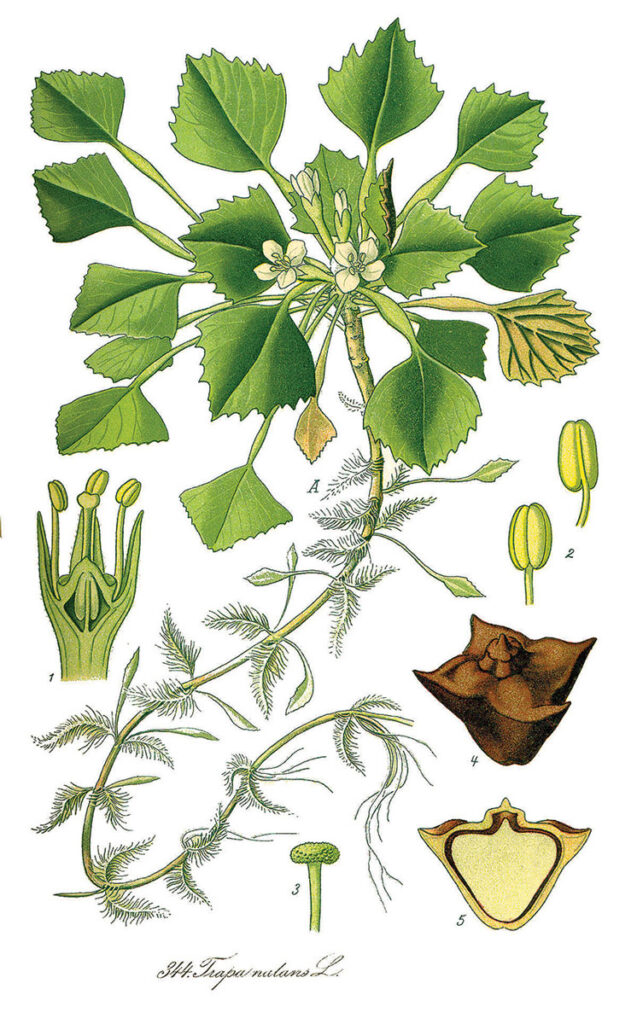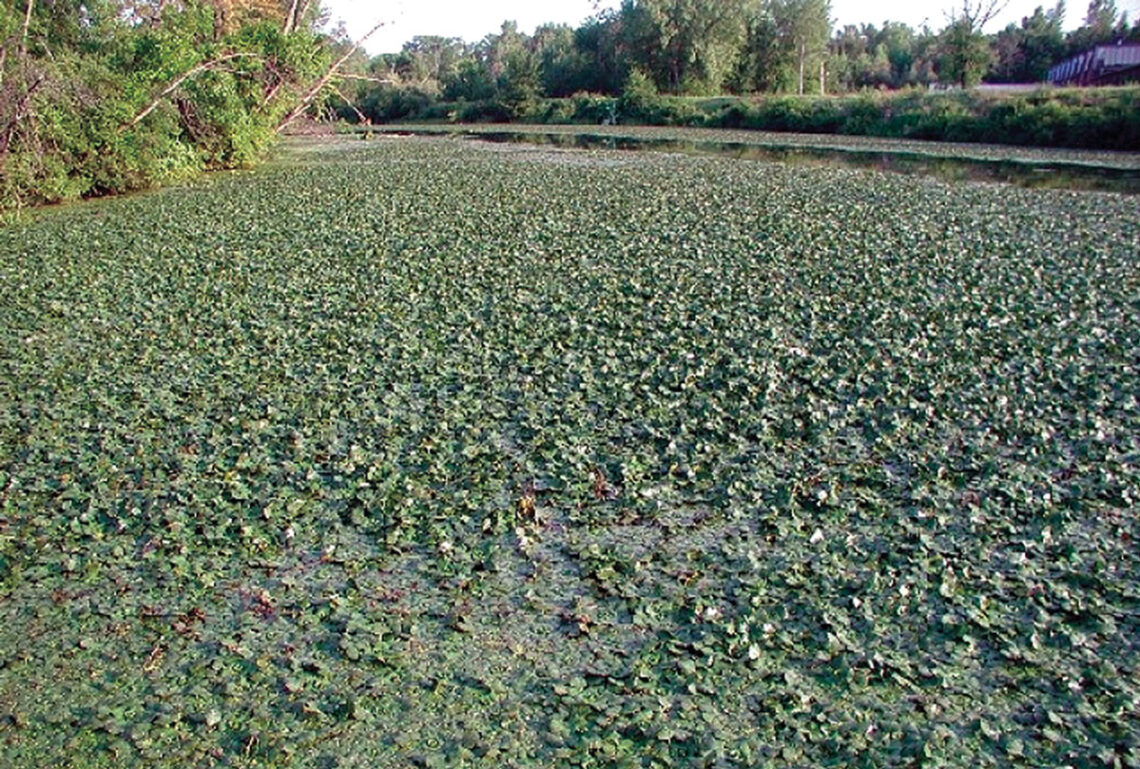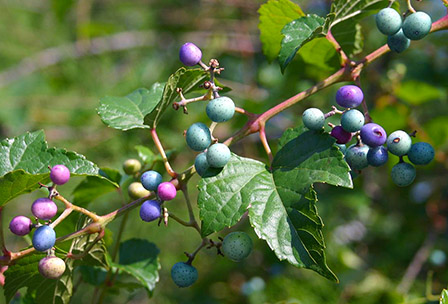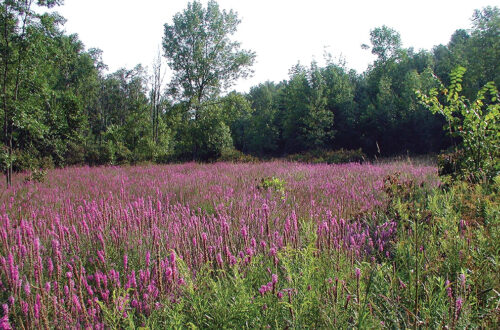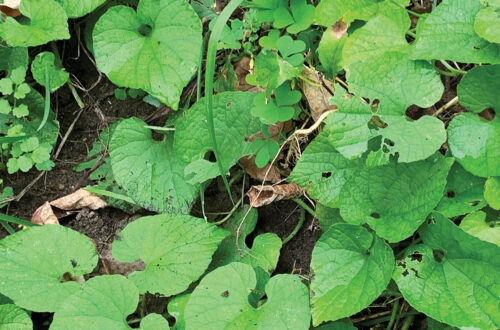Water Chestnut (Trapa natans) infests many lakes and streams in Connecticut. Its common names include European water chestnut, water nut, horned water chestnut, water caltrop and bull nut. Native to Africa, Asia and Europe, it can be either free floating or rooted.
It was first reported in North America near Concord, Massachusetts, in 1859. Its habitat includes lakes and ponds, slow-moving rivers and streams, and freshwater tidal estuaries. It prefers nutrient-rich waters less than 16 feet deep with a neutral to slightly alkaline pH.
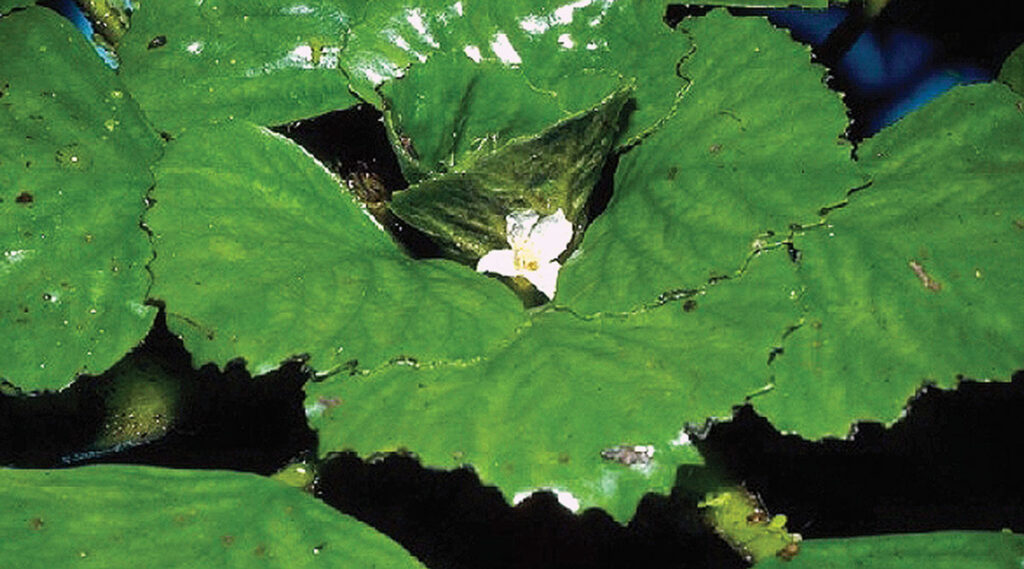
Leaves
The shiny two-inch leaves in the buoyant rosettes are triangular and have a saw-toothed edge. They connect to
an inflated petiole that adds buoyancy.
The leaves are dimorphic, they have one form on the surface and another below water. The feathery underwater leaves are darker and arranged in pairs or whorls of three.
The plants are attached to a long cord-like stem rooted in the mud.
Flowers
A small white flower with four 1/3-inch-long petals sprouts from the middle of the rosette.
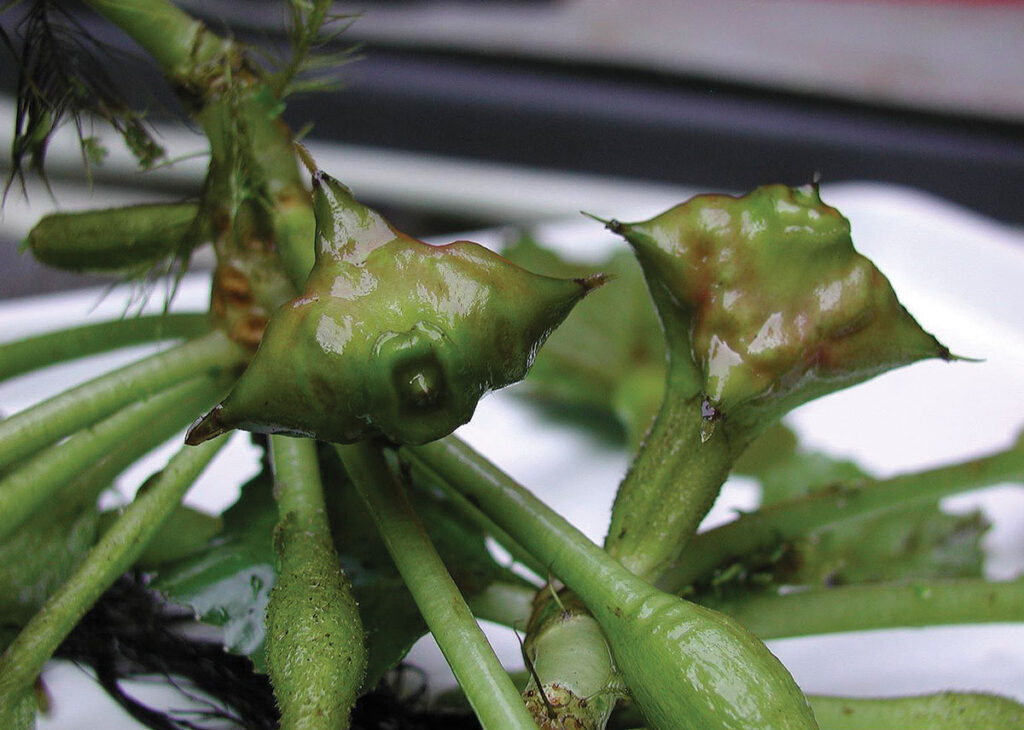
Seed & Fruit
Floating rosettes of leaves and fruit can be moved by water currents and wind. It spreads clonally by producing rosettes during the growing season. It can also move by attaching itself to birds or boats.
Each rosette can produce 20 nuts that can remain viable in sediment for 1-5 years or more.
The seed is a 1.25-1.5 inch nut with four sharp half-inch spines that can injure swimmers, waders and fishermen. When they ripen they have a fleshy greenish-brown coating that wears off to reveal a hard black seed that looks something like a military caltrop.
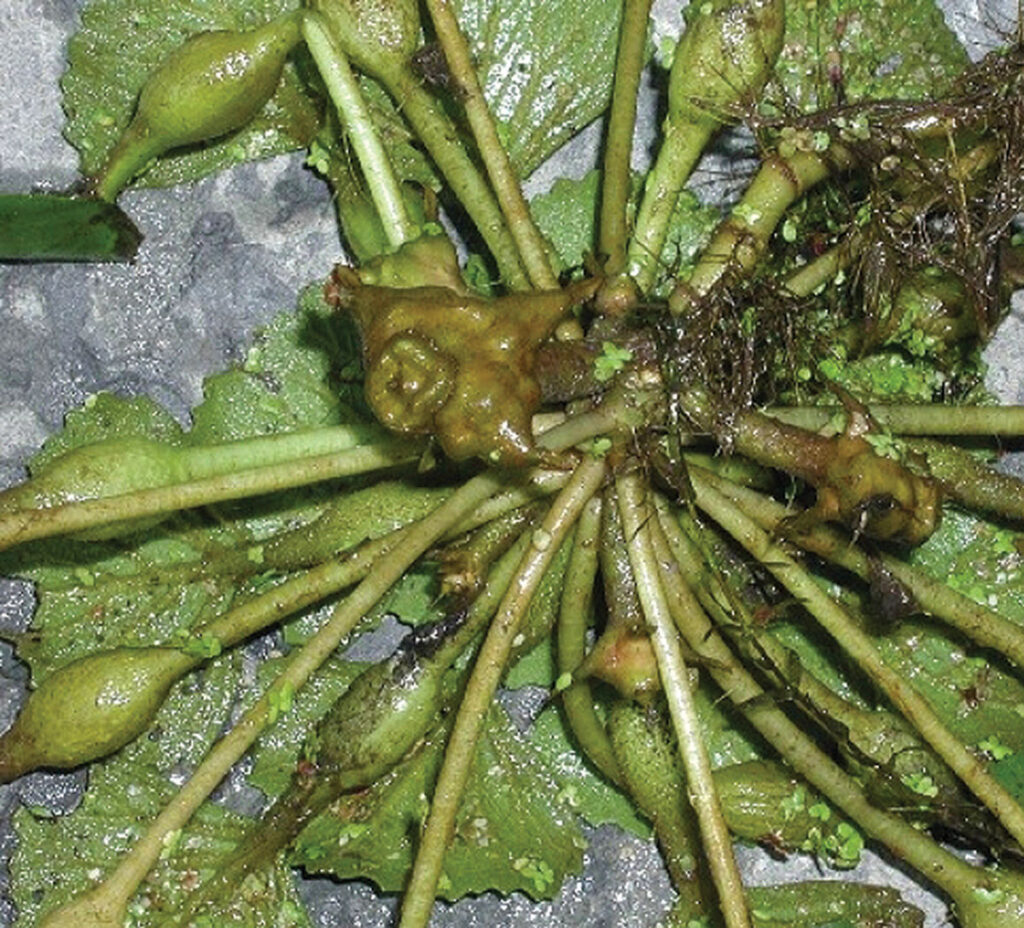
Submerged Stems
Submerged stems can reach 15 feet in length. Fine roots anchor the plants to the bottom.
Ecological Threat
The surface mat, once established, reduces light levels below. When the biomass decomposes it reduces oxygen levels in the water. It competes with native vegetation and is of little value to waterfowl. Infestations can impede swimming, fishing, boating and navigation.
According to Invasive Aquatic Plants of Connecticut … “Plants spread quickly and can cover the surface of a lake within a few years. Biomass can increase tenfold from one year to the next. Plants form dense mats on the surface of the water, shading out submerged plants.”
One seed can produce 10-15 rosettes, and each rosette can produce up to 20 seeds.
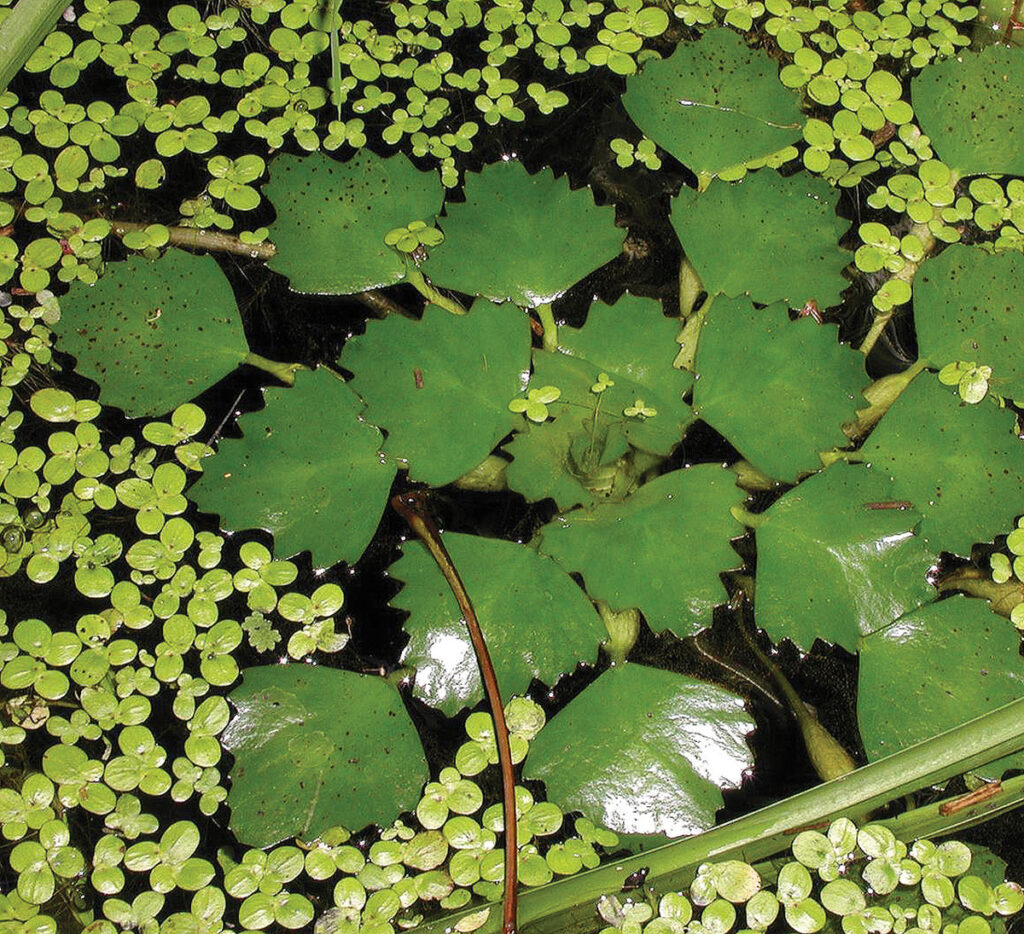
Removal
Manual, mechanical and chemical methods are used for removal, usually by trained professionals. Removal should take place before the seed set in July.
– Will Rowlands
